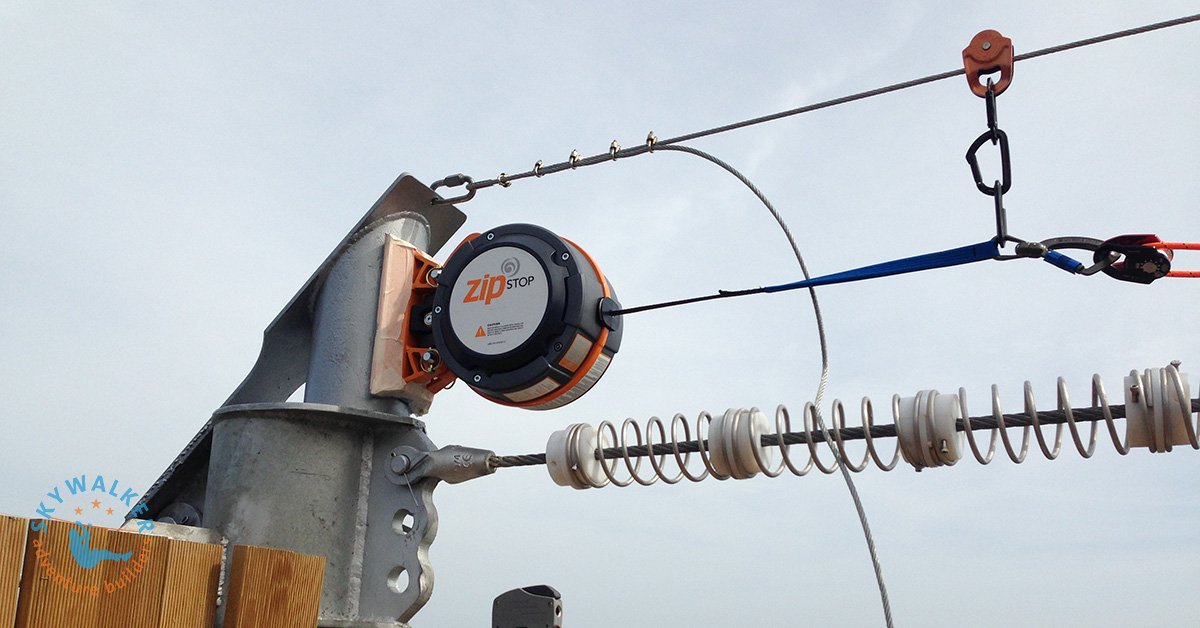Did you know that all high-speed zip lines are required to have an emergency arrest device?
Worldwide norms and associations, mandate that all zip lines have a backup braking system. Here’s the details to help you get in compliance with your zip line’s emergency arrest device.
In most recreational ropes courses zipline's and zipwire's are designed and constructed in a way that all riders arrive in a controlled way at low speed. For longer zipline's, deathride's and flying foxes a braking system is used to brake users smooth, consistently. A high-speed zipline with only one braking system could be defined as "single point of failure", since there is no backup or emergency arrest device (EAD). This article will help you to see if your zipline is in compliance or needs adjustment to give riders the extra safety needed.
What is an emergency arrest device?
All zipwires have a primary braking system to stop the rider at the end of the line. But beyond this measure, zip lines should also have an emergency or back-up braking solution. An emergency arrest device (EAD) is just what it sounds like – it is the thing that would stop rider in an emergency situation where the primary braking system doesn’t do its job.
Braking systems, both primary and back-up, usually fall into three camps:
-
Manual/Active: Here the rider is responsible for bringing themselves to a stop at the end of the line, either with a gloved hand on the cable or through a manual braking device.
-
Automatic/Passive: Here the braking system brings the rider to a stop without them having to do anything, often through impact.
-
Gravity: Here the rider comes to a stop gradually, without a formal brake device, through the use of gravity and the specific engineering of the line.
The purpose of an emergency arrest device is to minimize accidents from user error or equipment failure. Since zipline brakes come in a variety of formats, from simple and cheap to complex and expensive, there are several options for emergency arrest devices.
Emergency arrest device options
Most braking systems can be used as a primary or backup brake. The specific options you choose will depend on your zip line construction, speeds, location, length, budget, motivations/goals and intended rider experience.
At Skywalker, we take zipwire braking seriously. The zipSTOP Zip Line Brake is a primary brake. Benefits of the zipSTOP include smooth, consistent and reliable braking, automatic resets, increased throughput and a positive user experience. Even though zipSTOP is designed to function as a primary and standalone brake, you still must have an emergency arrest device that serves as a secondary, independent solution to mitigate the risk of user error or third-party equipment failures.
For zipSTOP Zip Line Brakes, spring packs may be a viable EAD option if installed and operated correctly. Also, although pads aren’t approved by ACCT as an approved EAD, it’s always a good idea to keep terminal posts and line connections protected and/or padded as an extra precautionary measure.
Please contact us to discuss with one of our experts.

Additional articles on the ZipCoaster technology
Interested to read more about Rollercoaster Zipline technology and expert knowledge?
- The ZipCoaster is a whole new experience
- The ZipCoaster - Fly through the air, dipping and twisting at an amazing speed!
- Ingenious inventions. The curvy zip line
- Zipline Design & Engineering Solutions
- First UK ZipCoaster is ready to Rock n' Roll
- ZipCoaster would make for the perfect endor adventure
- UK ZipCoaster construction progressing
- Transform your unused roof space into a unique attraction
- UK ZipCoaster Wheelchair Lift Ready for Action
- Roller Coaster Zipline: The Thrilling and Profitable Amusement Solution
- The Science of Zipline Design
- How to Launch a Zip Line Company












